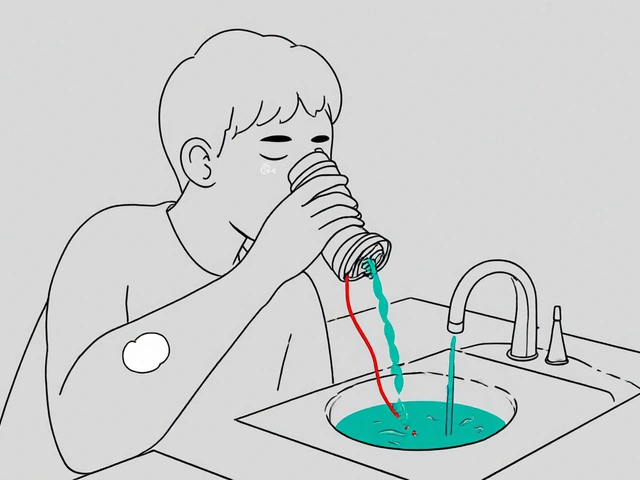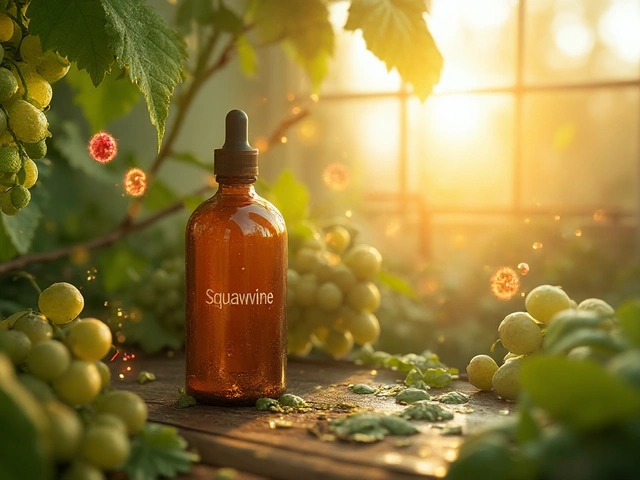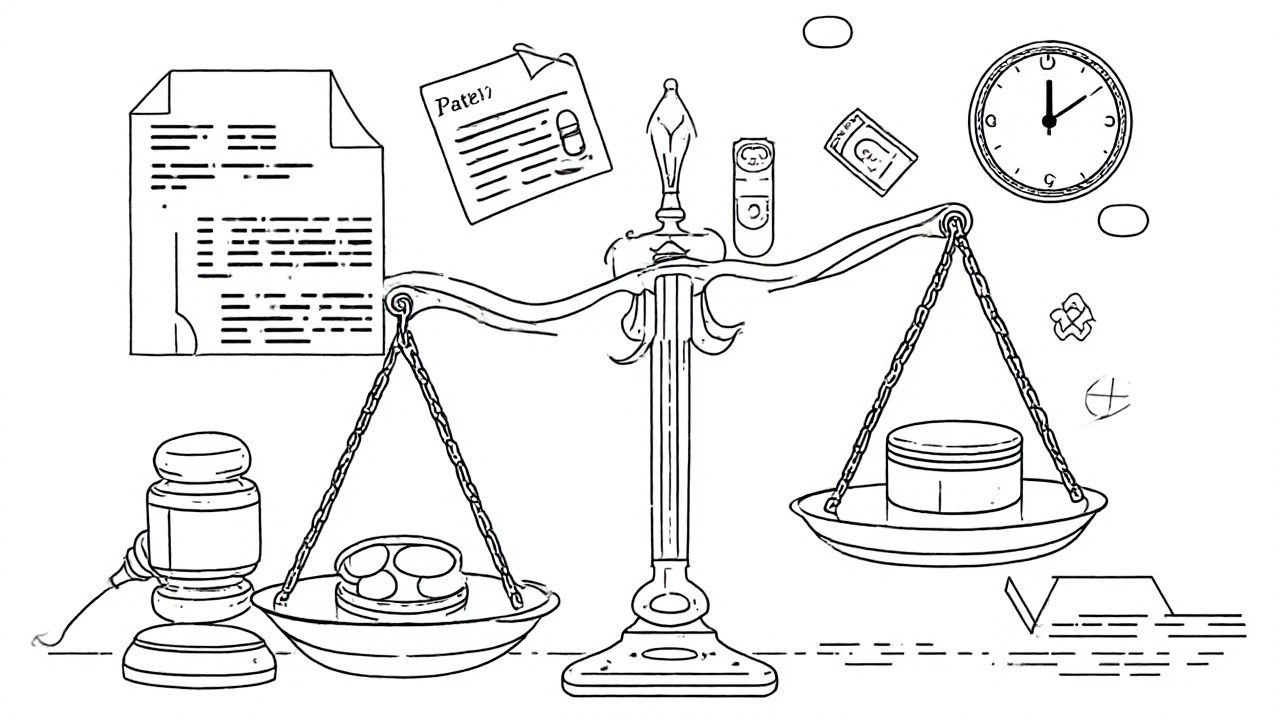When you walk into a pharmacy and pick up a generic version of your prescription, you’re not just saving money-you’re benefiting from a decades-long legal battle fought in courtrooms across the U.S. The fight between brand-name drug companies and generic manufacturers isn’t about who makes the better pill. It’s about patents, timing, and who gets to sell the drug first. And the outcome of these cases directly affects how much you pay for medicine.
How Generic Drugs Enter the Market: The Hatch-Waxman Act
The system that lets generics enter the market was created in 1984 by Senators Orrin Hatch and Henry Waxman. It’s called the Drug Price Competition and Patent Term Restoration Act-better known as the Hatch-Waxman Act. Before this law, brand companies could delay generics indefinitely by filing endless patents. Generic makers had to repeat expensive clinical trials just to prove their drug worked. That made generics too costly to produce.
Hatch-Waxman changed everything. It allowed generic companies to file an Abbreviated New Drug Application (ANDA), skipping full clinical trials if they could prove their drug was bioequivalent to the brand version. In return, they had to certify whether the brand’s patents were valid or being infringed. This certification is called a Paragraph IV certification. If they say a patent is invalid or won’t be infringed, the brand company has 45 days to sue. If they do, the FDA can’t approve the generic for 30 months-unless the court rules faster.
This 30-month stay isn’t a guarantee. It’s a pause button. Courts often lift it early if the generic’s challenge looks strong. And if the first generic company wins, they get 180 days of exclusive market access-no other generics can enter. That’s a huge financial incentive. It’s why so many generics rush to be first.
Landmark Case: Amgen v. Sanofi (2023)
In 2023, the Supreme Court ruled in Amgen v. Sanofi, a case that shook the biotech world. Amgen held a patent on a class of cholesterol-lowering drugs. But the patent claimed millions of possible antibody variations-yet only described 26 specific ones. Sanofi, a generic maker, argued the patent was too vague to be valid.
The Court agreed. It said a patent can’t claim something that covers millions of possibilities if the inventor only shows how to make a handful. This is called the ‘enablement’ requirement. The ruling made it harder for companies to use broad, vague patents to block competition. For biologics-complex drugs made from living cells-this was a big deal. Many patents in this space were written like fishing nets: wide, loose, and meant to catch everything.
After this decision, generic makers saw a new opening. Patents that used to look unbreakable now had cracks. But it also made it harder for innovators to protect their next-generation drugs. Some experts warn this could slow down investment in new antibody therapies. Others say it’s long overdue. Either way, the ruling shifted the balance. Now, generic challengers need less money to fight patents-they just need to prove the claims are too broad.
Landmark Case: Allergan v. Teva (2024)
While Amgen v. Sanofi weakened broad patents, Allergan v. Teva strengthened the power of the first patent filed. Allergan held a patent on a nasal spray used for allergies. Teva tried to challenge it using a later-filed patent that expired sooner. Teva argued the later patent was more relevant. The court said no.
The ruling was clear: only the first patent listed in the Orange Book matters for triggering a 30-month stay. Later patents-even if they cover the same drug-can’t be used to block generics if they weren’t the first to be listed. This decision closed a loophole that brand companies had been using to extend exclusivity by filing multiple patents over time.
Now, brand companies can’t just keep filing patents every few years to reset the clock. They have to get their key patents listed early. This has made the Orange Book-FDA’s public list of patented drugs-more important than ever. Generic makers now scrutinize every listing. If a patent is added too late, they can ignore it and move forward.
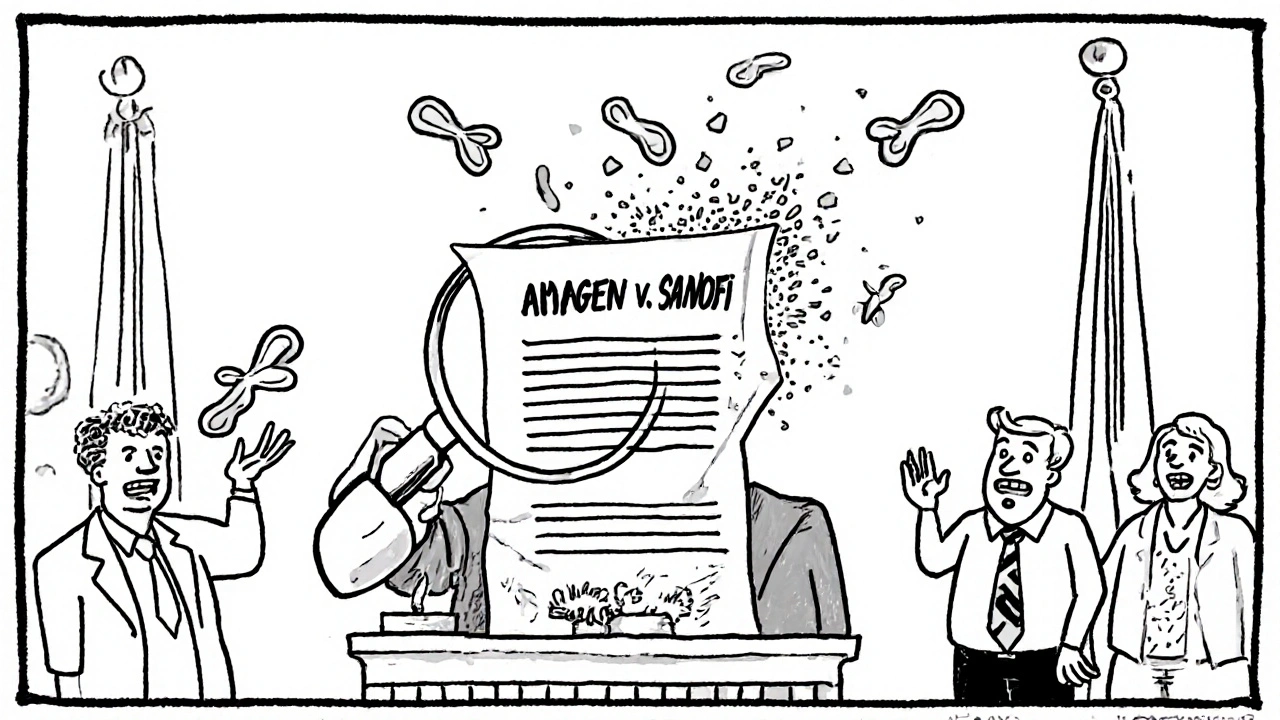
Landmark Case: Amarin v. Hikma (2024)
Patent infringement isn’t always about the drug itself. Sometimes, it’s about the label. In Amarin v. Hikma, Amarin sold a fish-oil-based drug approved only for very high triglycerides. Hikma made a generic version and labeled it for the same use. But Hikma’s marketing materials also suggested it could be used for lower triglyceride levels-a use not approved by the FDA.
Amarin sued, claiming Hikma was inducing doctors to prescribe the drug for off-label use. The court agreed. Even though Hikma’s label was technically correct, the marketing materials crossed the line. This case set a precedent: generic companies can be held liable for induced infringement if their promotional materials suggest unapproved uses.
Since then, generic makers have become much more careful with their marketing. Many now use what’s called “skinny labeling”-only listing the approved uses on the label and avoiding any mention of other potential uses. But even that’s risky. If a doctor prescribes the drug off-label anyway, the generic company could still be blamed if their website or sales reps hint at other uses. This case turned marketing into a legal minefield.
What’s Changing Now: IPRs and the Patent Office
Generic companies don’t just go to court anymore. They’re going to the Patent Trial and Appeal Board (PTAB). Since the America Invents Act of 2011, they’ve been able to challenge patents through inter partes review (IPR)-a faster, cheaper alternative to district court litigation.
In 2023, 78.3% of generic patent challenges started with an IPR. Why? Because it’s faster. District court cases take an average of 28.7 months. PTAB reviews often wrap up in 12 to 18 months. And the standard for invalidating a patent is lower. You don’t need to prove the patent is invalid beyond a reasonable doubt-you just need to show it’s more likely than not.
But there’s a catch. If the PTAB invalidates a patent, the brand company can still sue in district court. The rulings aren’t always aligned. That’s why smart generic companies file both IPRs and lawsuits at the same time. It’s a two-pronged strategy: attack the patent in the Patent Office, then in court.
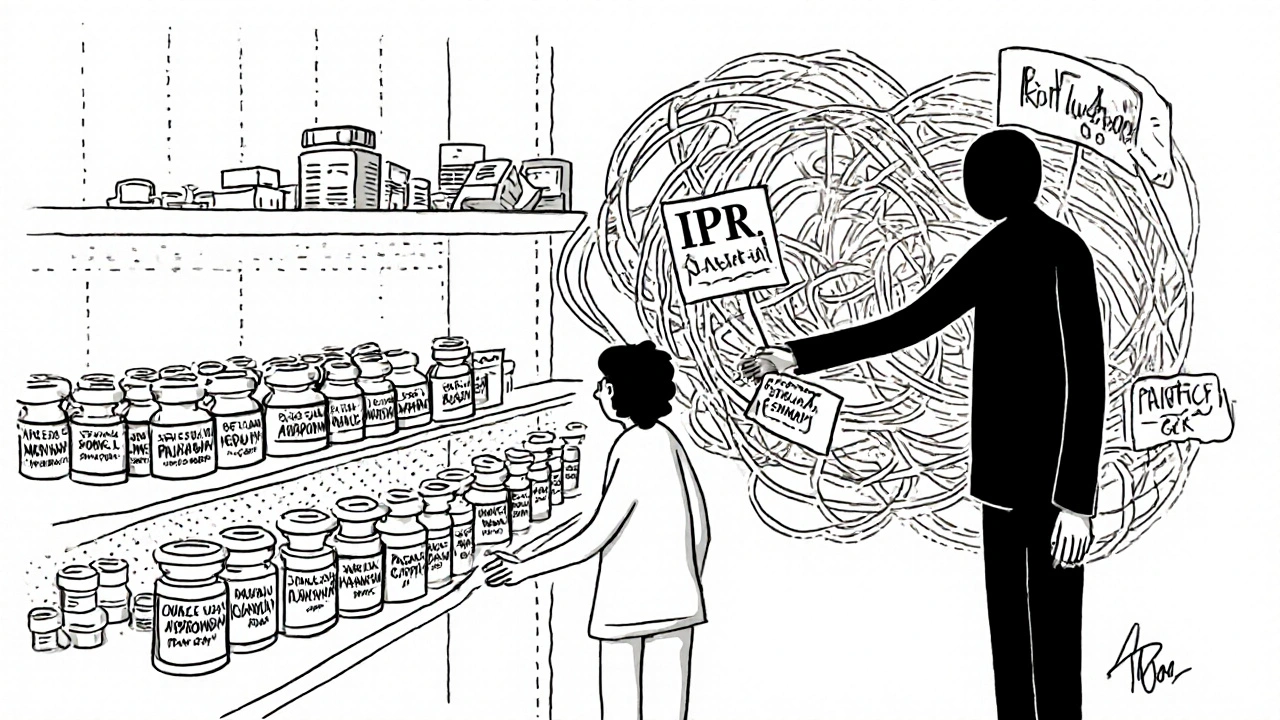
Why This Matters for Patients
Behind every legal decision is a person trying to afford their medicine. In 2024, 85% of U.S. prescriptions were filled with generics. That’s thanks to this system. But patent fights still delay access. One patient on Reddit said their insulin alternative was held up for 22 months because of a patent lawsuit. They paid $8,400 out of pocket.
When a patent is invalidated early, prices drop fast. The FTC found that once a generic enters, prices fall by 80-85% within a year. That’s not just a savings for individuals-it’s a savings for insurers, Medicare, and Medicaid. When generics are blocked, the cost is shared by everyone.
But the system is under strain. Brand companies are using more complex patents, especially for biologics. Generic makers are spending an extra $1.2 million per product just to prepare for litigation. And the FDA is now proposing new rules to stop “evergreening”-the practice of filing weak patents just to delay competition.
What’s Next?
The Supreme Court denied a rehearing in Amgen v. Sanofi in October 2024, meaning the stricter enablement standard stands. The FDA’s proposed 2025 rule on Orange Book transparency could make it harder to list patents that don’t clearly cover the drug. And biosimilars-generic versions of biologic drugs-are on the rise. By 2027, they’ll make up 31% of all generic patent challenges.
For patients, the goal is simple: faster access to affordable drugs. For the law, the goal is balance. Protect innovation, but don’t let patents become tools to delay competition. The courts are still figuring out where that line is. And every decision, from Amgen to Amarin, is shaping it.
What is the Hatch-Waxman Act and how does it affect generic drugs?
The Hatch-Waxman Act of 1984 created a legal pathway for generic drug manufacturers to bring cheaper versions of brand-name drugs to market without repeating expensive clinical trials. It requires generics to certify whether existing patents are invalid or won’t be infringed. If a generic files a Paragraph IV certification, the brand company can sue, triggering a 30-month stay on FDA approval. This system balances patent protection with competition, and it’s responsible for 85% of U.S. prescriptions being filled with generics today.
What is Paragraph IV certification?
Paragraph IV certification is a legal statement made by a generic drug company when filing an Abbreviated New Drug Application (ANDA). It says the brand’s patent is either invalid or the generic drug won’t infringe it. This triggers a 45-day window for the brand company to sue. If they do, the FDA can delay approval for up to 30 months. It’s the main legal tool generics use to challenge patents and enter the market early.
What is the Orange Book and why is it important?
The Orange Book is the FDA’s official list of approved drug products with their patent and exclusivity information. Brand companies must list patents covering their drugs within 30 days of issuance. Generic manufacturers use this list to identify which patents they must challenge to enter the market. If a patent isn’t listed, the generic can ignore it. The accuracy and timing of Orange Book listings are critical-misleading or late listings can be challenged in court.
How do IPRs affect generic drug litigation?
Inter Partes Reviews (IPRs) are fast-track patent challenges filed at the Patent Trial and Appeal Board (PTAB). Since 2011, 78% of generic patent challenges now start with an IPR because it’s cheaper and faster than district court. IPRs can invalidate patents in 12-18 months, compared to over two years in court. But a PTAB ruling doesn’t end the case-brand companies can still sue in district court. Many generics now use IPRs and court cases together to maximize pressure on patent holders.
Why did the Amgen v. Sanofi decision matter for generic drugs?
The Supreme Court’s 2023 decision in Amgen v. Sanofi made it harder for drug companies to patent broad categories of molecules without showing how to make them. Amgen claimed millions of possible antibodies but only described 26. The Court ruled the patent was too vague to be valid. This decision hit biologics especially hard, where broad patents were common. For generics, it means more patents can now be challenged on enablement grounds-opening the door for faster market entry on complex drugs.

